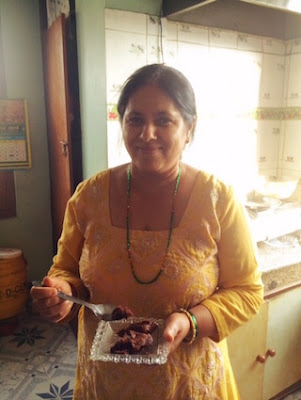India has samosas. Italy has ravioli. The US has cream-filled
donuts. Nepal? The momo.
This past Saturday we found ourselves elbow-deep in ground
chicken, cilantro, ginger, garlic, and Magic Momo Masala. Our language teacher
Sama had invited us for a lesson in making Nepal’s most popular snack food. Two billion per year popular! Within minutes it was clear that we were there for
the entertainment factor more than our efficiency in the kitchen. (Though just
for the record, this bahini made one or two more momos than my didi. J)
While the most traditional momo in Nepal is filled with
buffalo meat (in Tibet it’s yak), we think there just may be room to expand the
momo’s horizons: do I hear Nutella? Mushroom and brie?
 |
| Apparently momo-making inspires a common facial expression. Can someone please help Rose finish her name? |
Of course, Sama thinks Ghirardelli brownies might be the best way to Americanize the momo.







